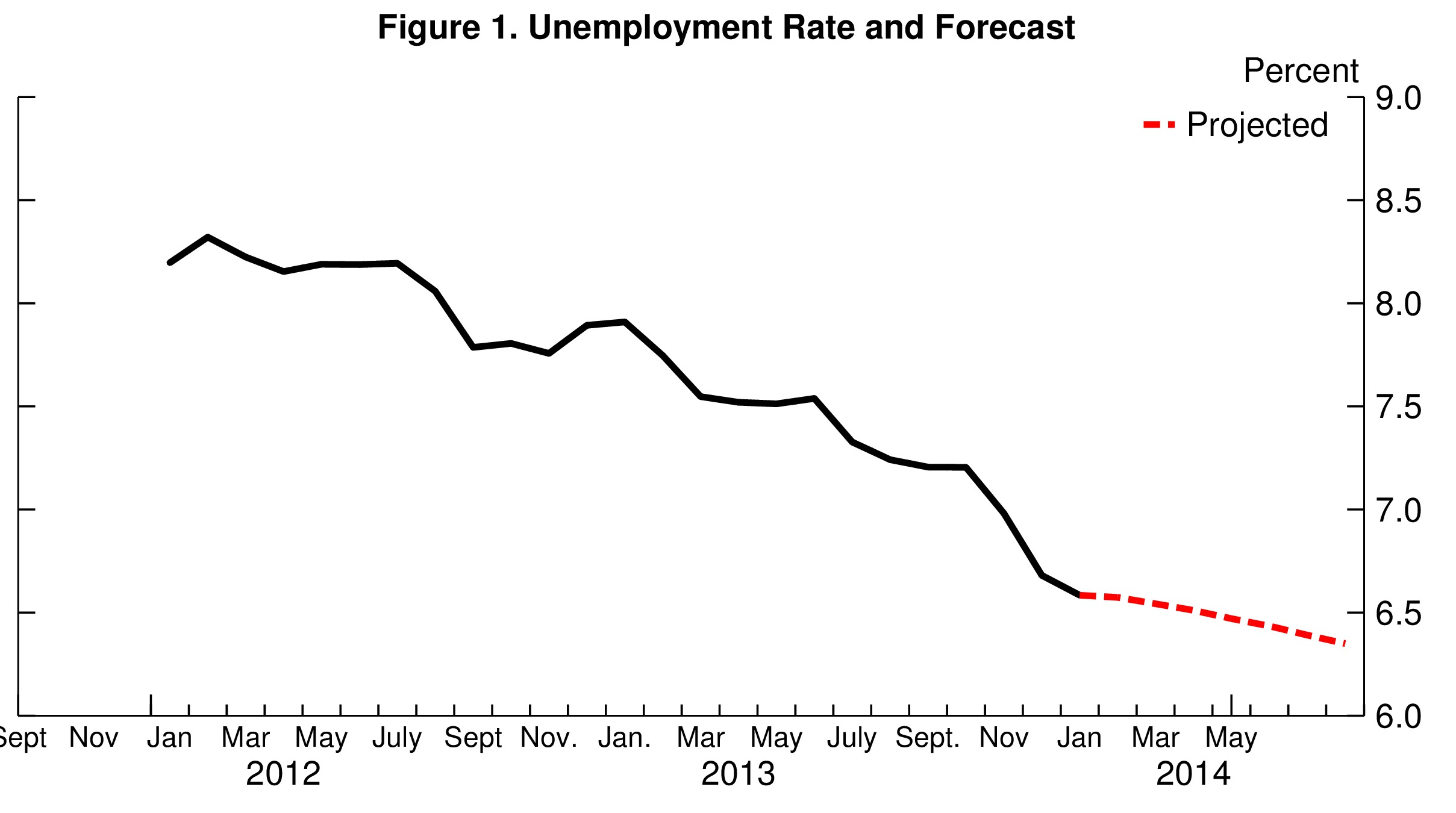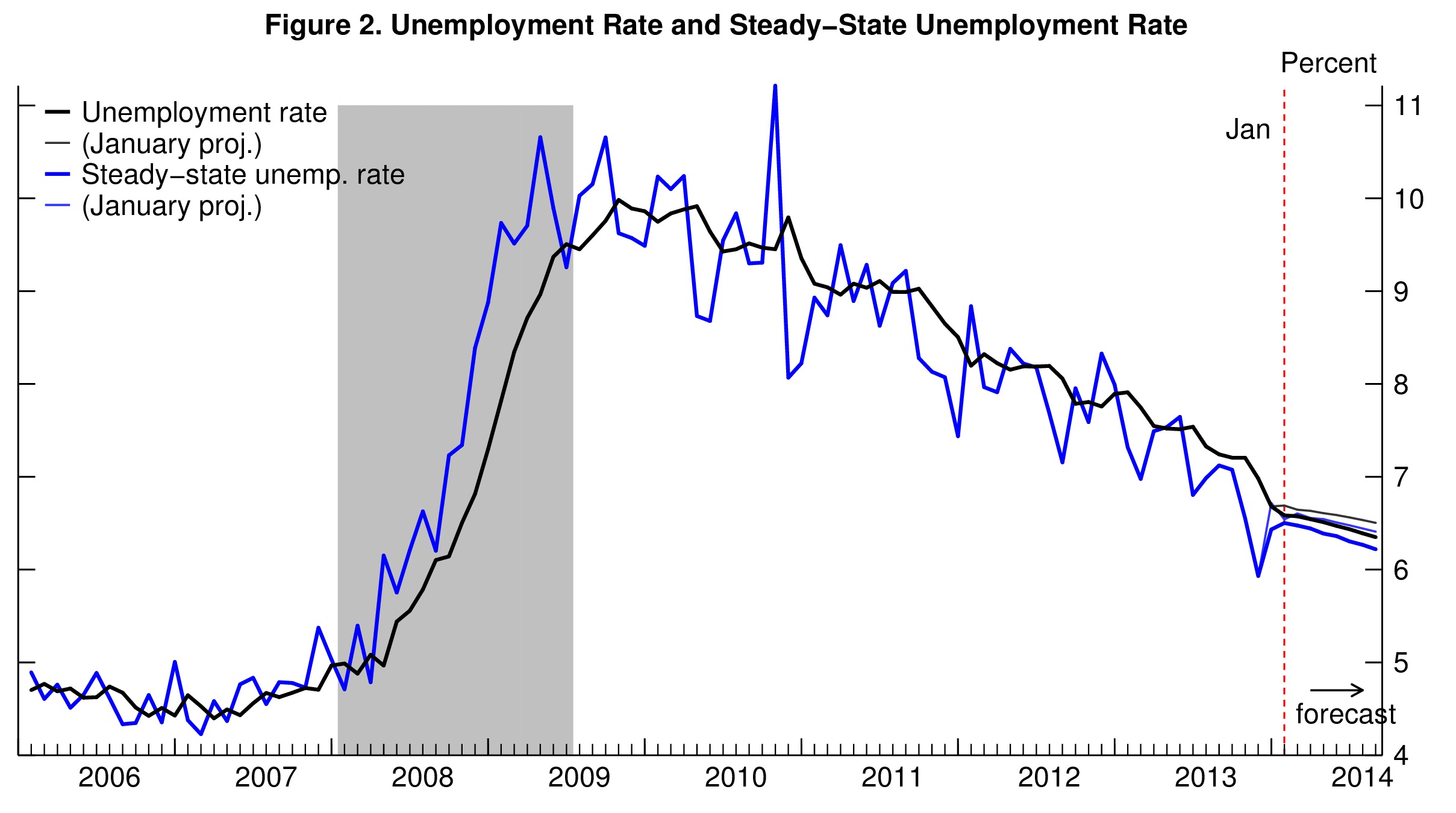This post discusses my monthly update of the Barnichon-Nekarda model. For an introduction to the basic concepts used in this post, read my introductory post (Full details are available here.)
In January, the unemployment rate declined to 6.6%, 0.1% lower than I expected. The difference is due to slightly stronger than expected growth in workers’ job finding rates. Going forward, this small positive surprise has little impact, and the contour of my forecast is little changed compared to last month: unemployment will decline slowly (that is, much slower than recently) over the next six months, with an unemployment rate at 6.3% by September 2014. The Fed’s threshold for pulling back quantitative easing of 6.5% should be reached by March.

This model’s forecast can be easily understood by looking at the projected behavior of the “steady-state” unemployment rate. The steady-state unemployment rate (the rate of unemployment implied by the underlying labor force flows—the blue line in figure 2) currently stands at 6.5%, just 0.1% lower than the actual unemployment rate. Our research shows that the actual unemployment rate converges toward this steady state. With a steady-state unemployment rate only slightly below the actual rate, the “steady-state convergence dynamic” that pushed the unemployment rate down steadily during the second half of 2013 is now gone.
In other words, the strong downward momentum in unemployment we observed lately should be over. Moreover, the model anticipates the steady-state unemployment rate (SSUR) to decline slowly over the coming months (figure 2). With such a slow decline in steady-state unemployment, the gap between the unemployment rate and SSUR will remain at about 0.1% and no strong downward momentum will develop. As a result, unemployment will decline only slowly, just like steady-state unemployment, over the next 6 months.

To forecast the behavior of steady-state unemployment (and hence of the actual unemployment rate), the model propagates forward its best estimate for how the flows in and out of unemployment will evolve over time. The stronger than expected job finding rate in January is carried forward by the model. As a result, the forecast for the transition rate out of unemployment is slightly stronger than it was as of last month (figure 3), and steady-state unemployment is expected to decrease slightly faster. All and all, however, the decline will be slow compared to what we saw in 2013Q4.


To read more about the underlying model and the evidence that it outperforms other unemployment rate forecasts, see Barnichon and Nekarda (2012).



Commentary
Unemployment to Stay at 6.6% in February, Declining Slowly to 6.3% by September
March 6, 2014